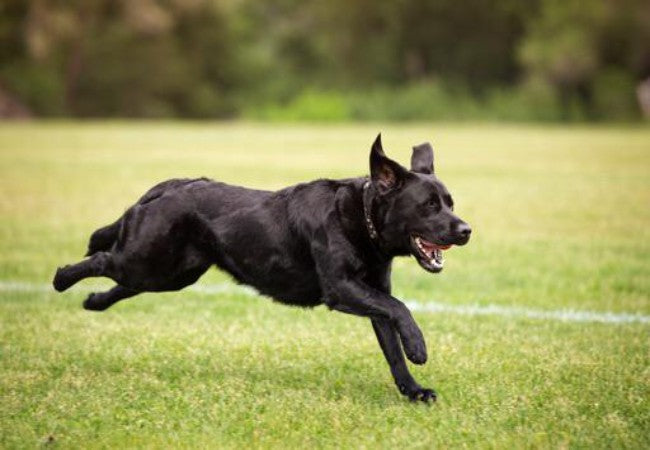5 Vet Approved Signs Your Dog Is Getting Too Much Exercise (2025 Guide)🩺🐶

In this article
5 Vet Approved Signs Your Dog Is Getting Too Much Exercise (2025 Guide)🩺🐶
By Dr. Duncan Houston BVSc
Regular physical activity is essential for your dog’s physical and mental health. But as a veterinarian, I’ve seen firsthand the problems that arise when dogs get too much of a good thing. From torn paw pads to serious behavioral changes, over-exercising your pup can do more harm than good. This guide will help you identify the signs that your dog may be overdoing it, offer tips on adjusting their routine, and explain how to create a healthier balance between activity and rest. 🐕🦺❤️
1. 🐾 Paw Pad Injuries
Paw pads act like shock absorbers and are crucial for protecting your dog’s feet. When dogs run or walk excessively—especially on hot pavement or rough trails—their pads can become worn, cracked, or torn. Common signs of paw pad injuries include:
- Redness and swelling
- Peeling or flaps of skin
- Bleeding or pus, indicating infection
- Limping or licking paws frequently
If your dog has a paw pad injury, it’s important to clean the area, apply antiseptic, and let them rest. Consider using dog booties during exercise on rough surfaces. Avoid intense walks until healed. 🩹🐾
2. 💪 Muscle Soreness and Fatigue
Just like us, dogs can suffer from delayed onset muscle soreness (DOMS) after a workout. You may notice the following behaviors:
- Reluctance to stand up or climb stairs
- Stiffness or slower movements the next day
- Whimpering or yelping when touched
- Shaking limbs or hesitating during walks
Muscle soreness usually resolves with 1–2 days of rest. If your dog continues to show pain, it may be more than just soreness—joint strain or injury could be involved. Integrating proper warm-up and cool-down periods during exercise can help prevent these issues. 🛌🧘♂️
3. 🌡️ Heat Exhaustion and Dehydration
Dogs are less efficient at cooling down compared to humans. Over-exercising in warm weather can easily lead to heat exhaustion or even heat stroke. Look out for:
- Heavy panting and drooling
- Vomiting or diarrhea
- Bright red gums or a glazed expression
- Collapse or fainting
Always bring water on walks, avoid midday heat, and choose shaded paths. Short-nosed breeds like French Bulldogs and Boxers are especially prone to overheating. If you suspect heat stroke, it's a veterinary emergency—cool your dog gradually and head to a clinic. 🥵🚑
4. 🦴 Joint Injuries and Long-Term Damage
Excessive impact from running, jumping, or rough play can lead to orthopedic issues, especially in:
- Puppies whose bones are still developing
- Large breeds prone to hip or elbow dysplasia
- Senior dogs with existing arthritis
Signs of joint trouble include limping, avoiding stairs, or yelping during movement. Long-term joint strain can lead to degenerative diseases. Moderate, low-impact exercise—like swimming or leash walking—is a safer option for at-risk dogs. Consult your vet if your dog shows signs of chronic discomfort. 🦮🦴
5. 🧠 Behavioral Changes and Burnout
When a dog is physically overworked, the mental toll can be just as serious. Dogs may:
- Lie down mid-walk or refuse to move
- Show signs of anxiety or irritability
- Become disinterested in food or play
- Withdraw from interaction
Unlike humans, dogs rarely show when they’re tired—especially working or herding breeds. That’s why it’s essential to schedule rest days, include calm enrichment activities, and listen to your dog’s subtle cues. 🧠💤
🐕 Tailoring Exercise by Age, Breed, and Health
There’s no one-size-fits-all approach to canine exercise. A young Border Collie will have vastly different needs than a senior Shih Tzu. Here are general guidelines:
💨 High-Energy Breeds
- Examples: Australian Shepherds, Huskies, Vizslas
- Need at least 90–120 minutes of exercise daily
- Include agility training, fetch, or scent work to provide mental outlets
🐶 Brachycephalic Breeds
- Examples: Pugs, French Bulldogs, Shih Tzus
- Limit walks to early morning or late evening
- Focus on indoor play and puzzle toys to reduce overheating risk
👴 Senior Dogs
- Keep sessions short and low-impact (e.g., swimming, gentle strolls)
- Prioritize mobility aids and joint support (glucosamine, ramps)
🧬 Dogs with Medical Conditions
- Always check with your vet before making major changes
- Conditions like heart disease or arthritis require tailored plans
If you're unsure how much activity your dog needs, consult your vet or use the Ask A Vet app for customized advice. 📲
🎾 When Less Is More: Enrichment Over Exhaustion
Instead of wearing your dog out physically every day, consider alternatives like:
- Training sessions to sharpen obedience
- Snuffle mats and puzzle toys for mental stimulation
- Interactive treat-dispensing gadgets
- Supervised social play with other dogs
🩺 When to Seek Veterinary Help
Contact your vet or use AskAVet.com if your dog shows any of the following:
- Limping or lameness that lasts more than 24 hours
- Signs of heat stroke
- Loss of appetite or vomiting after exercise
- Sudden behavioral shifts without explanation
It’s always better to be cautious. Early intervention can prevent long-term injury or stress. You can download the Ask A Vet app for fast, expert support anytime. 🩺📱
✅ Final Takeaways: How to Keep Your Dog Healthy and Active
- Observe your dog for subtle signs of fatigue
- Adapt activity based on age, breed, and health
- Incorporate rest days and mental enrichment
- Stay alert for symptoms of overexertion
Balancing exercise and rest is the key to a long, healthy, and happy life for your dog. By tuning into your pet’s needs and making smart choices, you’re building a safer, more rewarding lifestyle for both of you. 🐕❤️
Need expert help? Visit AskAVet.com or download the app to get tailored advice from licensed veterinarians anytime, anywhere. 📲






